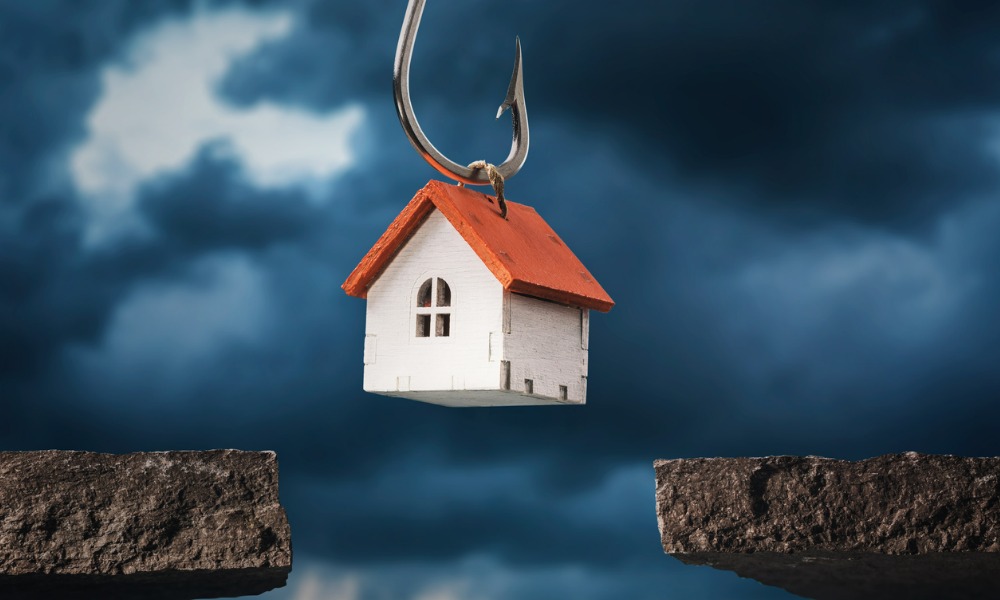Two in five fixed-rate borrowers will see their mortgage commitments jump 40%

Homeowners in the suburbs of Sydney and Melbourne will feel the most pain as fixed-rate loans expire this year.
When interest rates were at an all-time low during the COVID-19 pandemic, Australians snapped up fixed-rate mortgages in record numbers, according to a report by The Australian. The share of borrowers locking in fixed rates peaked at a record 45% of the market.
The Reserve Bank now estimates that two out of five of those fixed-rate borrowers will see an increase in their commitments of at least 40% as those loans roll over to variable rates over the next 18 months.
Mortgage cliff
The effects of this “mortgage cliff” will be felt most keenly in suburban areas of Sydney and Melbourne, where the average household will pay $13,000 extra each year, according to an analysis conducted by Lendi Home Loans for The Weekend Australian.
More than a third of all current fixed-rate loans were in New South Wales, the report found. These loans were most prevalent in Greater Western Sydney, especially The Hills and in the northwest suburbs of Richmond, Greystanes, Kellyville and Penrith, The Australian reported.
Similarly, fixed-rate loans were common in the outer Melbourne suburbs of Tullamarine, Broadmeadows, Wyndham and Point Cook. Suburbs of Brisbane such as Ipswich, Loganlea, Ormeau and Oxenford held the highest concentration of fixed-rate loans in Queensland.
“Broken promise”
Cameron Cook, director of economic research at PropTrack, said these areas are at greater risk from the mortgage cliff due to their popularity with first-home buyers and upgraders.
“It’s really first-home buyers, people that borrowed with limited deposit and those areas where prices haven’t actually grown that much over the last few years that are going to be the most challenged,” Kusher told The Australian. “A lot of first-home buyers probably have bought into that mortgage belt market and fixed, thinking, ‘My mortgage rolls off in 2023, 2024, interest rates will still be 0.1% and then they’ll go up gradually from there.’ That’s … a challenge for those buyers.”
To be fair to those buyers, they had reason to believe rates would stay low. The Reserve Bank said repeatedly in 2021 that rates would stay at the record low of 0.1% until 2024 at the earliest. Starting in May of last year, however, the central bank began an aggressive program of rate increases, hiking rates eight consecutive times.
Interest rates currently sit at 3.1%, with further hikes expected. In November, the RBA conceded that many saw its faulty 2021 rate guidance as “a broken promise.”
Many Australians borrowed on the back of that promise. The big four banks have a total of $267 billion in fixed-rate loans set to expire this year – nearly half of those currently on their books, The Australian reported. Another $174 billion will roll off in 2024.
Rate shock
The average fixed mortgage was $519,000 with a two-year term, according to Lendi Home Loans director Sam Hyman. Those borrowers could now see an extra $1,019 per month in payments as their fixed terms expire.
Read next: When will the bulk of fixed-rate rollovers occur?
“Given the average fixed mortgage interest rate this time two years ago was sitting at around 2.20%, we know it is these Aussie households who are heading for the biggest revert rate shock with their fixed rates roll off – facing into average standard variable rates now sitting at around 6% with the major lenders,” Hyman told The Australian. “If no action is taken by such borrowers, this equates to a yearly difference of $13,000 and a total life-of-loan difference of $327,000 over a 25-year loan term.”
Still, Kusher said he thought most borrowers would be able to cope with the changes.
“In most instances, people will be able to find a way to ride this out,” he told The Australian. “People will find ways to cut back on their spending elsewhere … [and] prioritise paying their mortgage over other things.”
Have something to say about this story? Let us know in the comments below.



